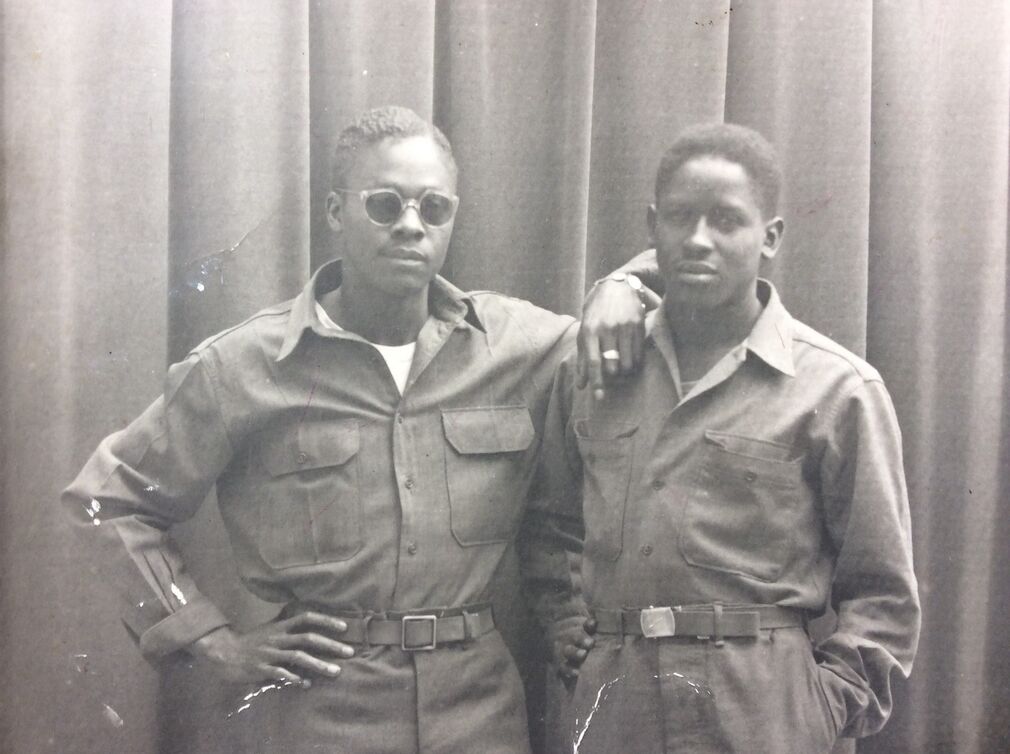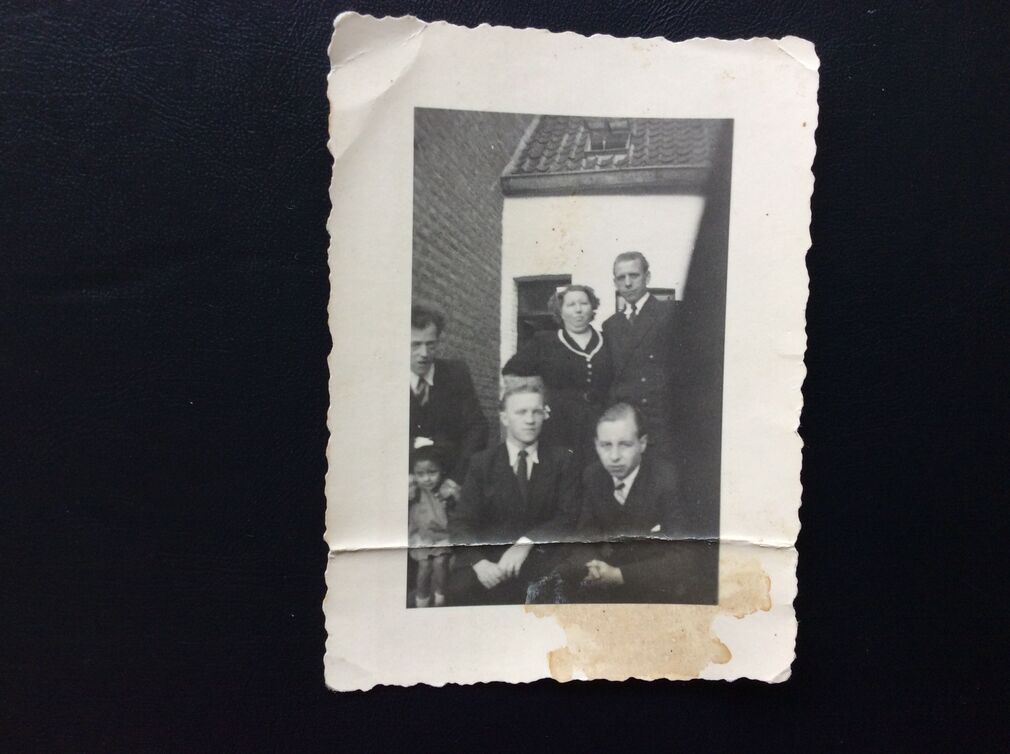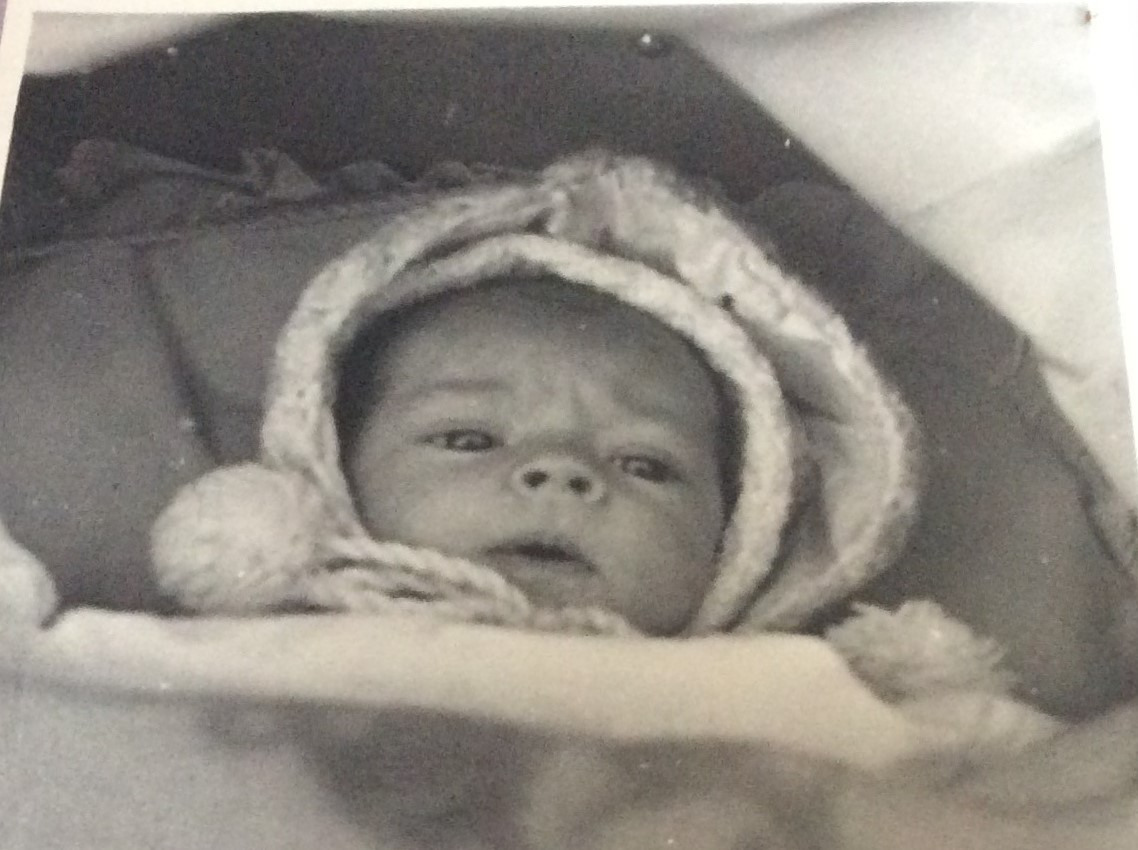Donna Bastiaans
One day, Mia Vliegen told her daughter Donna that she had probably been conceived in the back of an American army truck. The Black soldiers would drive her and the other girls anywhere. The soldiers knew this was not allowed, but everyone was having a good time.
Mia was the eldest daughter in construction worker Vliegen family. Since the 1930s they had lived in a district of Maastricht. Mia was nineteen when in 1945 she started going out with a Black American young man named Adolphus Graves. Hundreds of African American soldiers were stationed in the area, most of them in tent camps at two public squares in Maastricht. They were officially not allowed to leave the site when off duty, but they ventured out into Maastricht nevertheless.
The population quickly discovered that the Black soldiers did not eat people, on the contrary, they brought people food.
Many African American soldiers were also quartered with families and for the Vliegen family it was the first time they had seen Black people. Mia's mother was angry about the Nazi propaganda against the Americans and especially against the Black men. It was intended to scare people, with derogatory descriptions of supposedly cannibalistic Negro(sic) soldiers. 'This Hitler had a screw loose', Donna said indignantly. 'The population quickly discovered that the Black soldiers did not eat people, on the contrary, they brought people food.'


During the time of the liberation, photographer Wijnands was living in Maastricht. In an article in Dagblad De Limburger, his daughter recollected that Black soldiers came to the studio to have their portrait taken to send home. The white soldiers got wind of that and also wanted to be photographed, and - as was common in those days - demanded to go ahead of the Black GIs. This lead to fights, which was why Mr. Wijnands decided to organize alternate days for Black and white men so that he could take their pictures. Donna's picture of her father, on the mantelpiece, must have been taken in Wijnands studio. Donna used to live in the same neighborhood and was photographed there for her First Holy Communion. She lost that photo, but Donna remembered the set with the curtains and a small bench.
Mia befriended Graves, as everyone called him. Then she discovered she was pregnant. Graves knew of the pregnancy but was immediately transferred when the military command found out. This was before Donna was born. Mia kept in contact with Graves and they exchanged letters, often with photos enclosed. Mia's mother and Graves's mother Eliza were in touch for a while, but after a few years, the contact faded away. This may have been because in the early 1950s, Graves went to Korea as a professional soldier.


Mia and Donna lived with her parents, who were just pa and ma for Donna. In 1950, Mia married Harrie Bastiaans. Donna took his name and Donna was registered in the marriage booklet. Later Mia and Harrie moved to Maastricht and Donna stayed with her grandparents – for her 'ma and pa'. Out of the blue in 1953 a letter from Graves arrived. He wrote he had a civilian job with the army and wanted Mia and Donna to come to the States. Not only was Mia married then but she also was pregnant with her second child, Margo. Even if she had not been married, her father would have prevented her from leaving for the US. That was the last Mia heard from Graves.
Donna was angry with her mother for a long time for not giving her a chance to get to know her father. 'I often told her, why couldn't you wait for him?' Mia understood her daughter's anger but could not give any explanation other than 'that was just the way it was in those days.'
As a teenager, Donna often went out with a group of friends. When they arrived at a dance hall, she would hesitate to go in. Usually she waited till she was the last one to enter because she knew what was in store for her: people looking her up and down. All heads would turn towards her. None of the boys would dance with her. What did they see? A beautiful fifteen-year-old teenage girl, with curly hair and light brown skin. After a few years, she decided only to go out in nearby Liège in Belgium, where there were more people of color and nobody gave her a second glance when she was walking down the street.
For years, Donna worked at a sewing studio but she had a burn-out due to all the unrest in her head. She lived together with a man for some years and together they had a son, Hamady. After they broke up, Donna often went to Spain with her young son. There she met the man she would marry. Hamady got his last name, Aguilar. Hamady knew his grandma and her daughter initially lived with her parents. He also knew that his grandma had married grandpa Bastiaans too quickly. His mother and grandmother were fighting about that for years, because Donna could not forgive her mother for not waiting for her real father.
Hamady never experienced problems due to his skin color. He always had a mixed circle of friends of boys from Maastricht and of Moluccan descent. When they went out, it sometimes happened that he and his Moluccan friends were refused entry to a dance hall, but then their white friends always stood by them. The fact that he had an American grandfather was actually quite interesting to Hamady when he was a child, kind of 'chic'. In fact, that way he had an extra grandpa.
Donna worked all her life, first as a seamstress, but afterwards - and until retirement - as a domestic helper. Now that she is retired, she likes to babysit her grandson, Kenneth. Sometimes she still gets restless. When that happens, she will drive to the Belgian Ardennes. 'I come back very quiet and relaxed from a trip like that.' 'She always kept to herself,' Hamady said. At first, she was reluctant to meet other liberation children, but he talked her into it and went with her. According to him, now she is happy she got to know other children of black liberators. 'She will definitely be going to the next meeting.'
It is best to leave the past alone.
Adolphus Graves
Graves was from a small town in Virginia. On the envelope of the letter he sent to Donna was his mother Eliza's address. There was a letter from him from 1953 asking Mia to come to the US with Donna. He wrote he had been in Korea. Donna tried to figure out when he was where, but it was actually not all that important to her. 'Not necessary,' she firmly stated. 'It is best to leave the past alone.' She pointed to a framed picture of her father on the mantelpiece. On one of the photos it was written: '6.16.1945, From Pee Wee and Graves to Mia.'
Passed away
Donna passed away on December 16, 2022. Her son Hamady hopes to visit, together with his own son Kenneth, his grandfather's grave and meet his American family one day.
